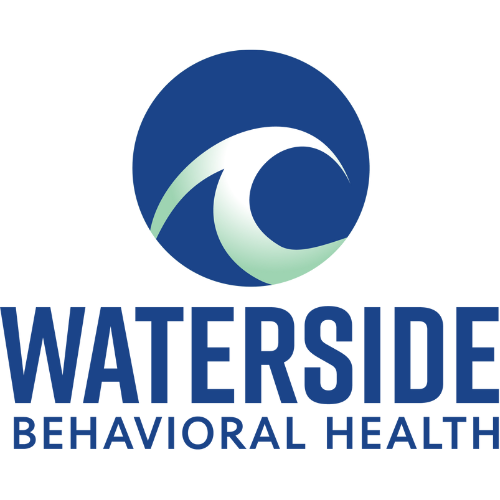Group therapy is a powerful and often overlooked option for those seeking mental health support. Whether you’re dealing with anxiety, depression, trauma, or life transitions, group therapy offers a unique space to connect with others who understand what you’re going through. But how does it work—and is it the right fit for you?
At Waterside Behavioral Health, we specialize in Group Therapy in Massachusetts, offering evidence-based treatments to help individuals manage and recover from depression. Whether through Cognitive-Behavioral Therapy in Massachusetts (CBT), Dialectical Behavior Therapy in Massachusetts (DBT), or medication management, our goal is to provide personalized solutions that lead to lasting recovery.
This guide explores the pros and cons of therapy and medication, helping you determine which approach—or combination—might be best for you.
Group Therapy: Exploring Its Benefits for Mental Health Support
Group therapy offers a powerful way for individuals to connect and heal in a supportive environment. It provides a space where people can share their experiences, learn from others, and develop coping strategies together. This type of therapy is different from individual counseling because it draws on the shared experiences of the group.
Participants often find strength in community. By hearing others’ stories, individuals can feel less isolated and more understood. Group dynamics play a crucial role in how therapy progresses, helping members to trust and support one another throughout their journey.
Through structured sessions and guided discussions, group therapy can address a variety of issues, from anxiety to relationship problems. It enhances personal growth and fosters a sense of belonging, making it an effective option for many seeking help.
Key Takeaways
- Group therapy encourages sharing and connection among members.
- Group dynamics significantly impact the effectiveness of therapy.
- Participants can address various issues and promote personal growth.
Basics of Group Therapy
Group therapy is a method of treatment where individuals come together to discuss their experiences and feelings. It helps them learn from each other while receiving support from a trained therapist. This section provides an overview of group therapy, including its definition and purpose, historical development, and common types.
Definition and Purpose
Group therapy is a type of psychotherapy that involves one or more therapists working with a small group of clients. Each session typically includes 5 to 15 participants. The main goals are to encourage interaction, foster support, and promote personal growth.
Participants can share personal stories in a safe environment. They may find that others share similar experiences. This connection often helps reduce feelings of loneliness and isolation. Group therapy can address issues like anxiety, depression, and relationship problems.
Historical Overview
Group therapy has its roots in the early 20th century. One of the first documented uses was in the 1940s. Psychologists began to see the benefits of people sharing experiences in a group setting.
After World War II, many veterans needed mental health support. This need led to the growth of group therapy. It has since evolved to include various approaches, such as cognitive-behavioral and interpersonal therapy.
Today, it remains a popular treatment option in mental health care, often used alongside individual therapy.
Common Types and Formats
There are several types of group therapy, each with its own focus. Some common formats include:
- Support Groups: These groups offer emotional support for specific issues like addiction or grief.
- Psychoeducational Groups: Participants learn about mental health topics and coping skills.
- Process-Oriented Groups: These sessions focus on interpersonal dynamics among group members.
Each type serves different needs, allowing individuals to find the right fit for their recovery journey. Sessions typically run weekly and last from 60 to 90 minutes.
Theoretical Frameworks
Many different theories support group therapy. These frameworks guide how groups function and help members heal. The following approaches highlight the essential elements of each theory.
Psychodynamic Approach
The psychodynamic approach focuses on unconscious processes and past experiences. It believes that understanding childhood and past relationships can help individuals identify recurring patterns in their current behavior.
In group therapy, members share personal stories. This often brings repressed feelings to the surface. A therapist helps the group explore these feelings to promote healing.
Through discussions, participants might uncover defenses or conflicts. They learn how their past influences their present. This approach fosters insight and encourages emotional growth.
Cognitive-Behavioral Therapy Groups
Cognitive-Behavioral Therapy (CBT) groups aim to change harmful thought patterns. The theory suggests that thoughts affect emotions and behavior. By addressing negative thoughts, individuals can improve their mental health.
In CBT groups, members learn to recognize and challenge distorted thinking. They practice skills such as problem-solving and coping strategies. This approach often includes homework assignments to reinforce learning.
Group support allows members to share experiences and strategies. This creates a learning environment that encourages personal responsibility. Members can see real change through their efforts.
Humanistic and Existential Groups
Humanistic and existential approaches focus on personal growth and self-acceptance. These groups emphasize the individual’s experience and the search for meaning. They support members in exploring their feelings and values.
In this setting, group members engage in open dialogue. They are encouraged to express their thoughts and emotions freely. This fosters trust and connection among participants.
The therapist acts as a facilitator, promoting self-discovery. Members learn to accept themselves and others. This approach helps individuals find purpose and improve their sense of well-being.
Other Therapeutic Approaches
Various other approaches can also enhance group therapy. For example, solution-focused therapy centers on finding solutions rather than discussing problems. Members focus on strengths and past successes to encourage progress.
Arts-based therapies use creative expression to promote healing. Techniques like art, music, or drama can help members share feelings in non-verbal ways. This invites unique insights and fosters group cohesion.
There are also structured groups for specific issues, like addiction or anxiety. These groups use tailored strategies to meet the distinct needs of their members. Each approach offers valuable tools for healing and growth.
Group Dynamics and Processes
Understanding how groups interact and evolve is key to effective group therapy. Dynamics such as stages of development, cohesion, therapeutic factors, and leadership influence the group’s success.
Stages of Group Development
Groups often go through specific stages as they develop. Bruce Tuckman’s model describes four main stages: forming, storming, norming, and performing.
- Forming: Members get to know each other and establish ground rules.
- Storming: Conflicts may arise as members express differing opinions.
- Norming: The group starts to find its rhythm. Cooperation and mutual support increase.
- Performing: The group works effectively towards shared goals. Members trust each other and communicate openly.
Recognizing these stages helps facilitators guide the group effectively.
Group Cohesion
Group cohesion is the bond that holds members together. High cohesion often leads to a more supportive and trusting environment.
Factors affecting cohesion include:
- Shared Goals: Clear objectives unite members.
- Communication: Open dialogue fosters trust.
- Participation: When all members engage, they feel more connected.
Strong cohesion can enhance the therapeutic experience. It encourages members to share openly and support one another.
Therapeutic Factors
Many therapeutic factors play a role in effective group therapy. These elements contribute to healing and personal growth. Key factors include:
- Universality: Members realize they are not alone in their struggles.
- Altruism: Helping others can improve self-esteem.
- Interpersonal Learning: Members gain insights about themselves through interactions with others.
These factors encourage individual reflection and promote a sense of community among members.
Leadership Styles and Roles
Effective leaders shape the group dynamics. Different leadership styles can influence how a group functions.
- Authoritative: Provides clear guidance and direction.
- Facilitative: Encourages participation and helps members share freely.
- Laissez-faire: Gives members more control, which may enhance creativity but can lead to a lack of direction.
A good leader adapts their style to meet the needs of the group. They should be observant and responsive to the dynamics at play.
Management of Group Therapy
Effective management of group therapy is essential for creating a supportive atmosphere. Key areas include ensuring safety, establishing clear rules, and handling any conflicts that arise. Each of these components helps maintain a productive environment.
Creating a Safe Environment
A safe environment is vital for group therapy. Participants should feel secure to express their thoughts and emotions without fear of judgment.
Therapists can create this space by:
- Encouraging openness: Letting members know that sharing is welcome.
- Listening actively: Showing genuine interest in each person’s input.
- Maintaining confidentiality: Reminding everyone that what is said in the group stays in the group.
This safety encourages honesty and connection among members, which can lead to deeper healing.
Setting Ground Rules and Boundaries
Establishing ground rules sets clear expectations. These rules guide group behavior and interactions.
Common rules include:
- Respect for all members: Ensuring everyone speaks and listens without interrupting.
- No personal attacks: Emphasizing that feedback should be constructive.
- Time limits for sharing: Giving each member a fair chance to talk.
Boundaries help maintain focus during sessions. They ensure that everyone understands the limits of discussion topics and personal disclosures.
Dealing with Resistance and Conflict
Resistance may occur when participants feel uncomfortable. Therapists should address it promptly to foster growth.
Strategies include:
- Acknowledging feelings: Validating members’ emotions to lower defenses.
- Encouraging dialogue: Creating space for members to discuss their hesitations openly.
- Using role play: Allowing members to explore different perspectives in a safe way.
When conflicts arise, it’s important to mediate effectively. Identifying the root cause helps resolve issues, promoting harmony within the group.
Ethics and Professional Practice
Ethics and professional practice are essential in group therapy. They guide therapists in creating a safe and supportive environment for clients.
Confidentiality and Privacy
Confidentiality is a key part of group therapy. Therapists must ensure that everything shared in the group stays within the group. This builds trust among participants.
Clients should feel safe to share personal information without worrying about it being disclosed outside the group. Breaches of confidentiality can harm the group dynamic and limit open communication.
Therapists often explain confidentiality rules before starting. They should also discuss any exceptions, such as threats to safety. Clear communication about these matters helps clients understand their rights and responsibilities.
Ethical Considerations
Ethical considerations involve the therapist’s responsibility to create a fair and respectful environment. Therapists must treat all group members equally and avoid favoritism.
Informed consent is crucial. Clients should know what to expect from the therapy process. They need clear information about the goals, risks, and benefits involved.
Therapists should also be aware of their limits. They must seek supervision or consultation if challenges arise. This ensures that clients receive the best possible care.
Cultural Competence in Group Therapy
Cultural competence is vital in group therapy settings. Therapists must understand and respect the different backgrounds of their clients. This includes recognizing biases and assumptions that may affect the process.
Group therapy often includes individuals from various cultures. Therapists should adapt their strategies to be inclusive. This supports a space where everyone feels valued.
Training in cultural competence can help therapists navigate these issues. They can better respond to the needs of all participants. Understanding diverse perspectives fosters empathy and connection within the group.
Measuring Outcomes
Measuring outcomes in group therapy involves specific tools and methods that show the effectiveness of the sessions. It is essential to evaluate both individual progress and the group as a whole. This helps in understanding the impact of therapy on participants’ well-being.
Assessment Tools and Techniques
Various assessment tools are used to evaluate participants in group therapy. Common methods include standardized questionnaires, interviews, and self-report measures.
Examples of tools:
- Beck Depression Inventory (BDI): Measures depression severity.
- Generalized Anxiety Disorder 7 (GAD-7): Assesses anxiety levels.
- Customized Surveys: Tailored to specific group goals.
These tools help therapists track changes over time, allowing them to see improvements or identify areas needing more focus. Regular assessments ensure that each member’s needs are addressed effectively.
Evaluating Group Effectiveness
Evaluating the effectiveness of the therapy group is essential. This can be done through feedback, observations, and group discussions.
Key evaluation methods include:
- Feedback Forms: Collected after each session to gauge participant satisfaction.
- Role-Playing Exercises: Allowing participants to demonstrate learned skills.
- Progress Tracking: Monitoring individual and group goals set at the beginning of therapy.
By analyzing these factors, therapists can determine what works best for the group. This information is valuable for improving future sessions and enhancing the overall therapy experience.
Specialized Group Therapy Applications
Specialized group therapy focuses on specific needs and challenges faced by different communities. These targeted approaches offer support and strategies tailored to help individuals navigate their unique situations.
Addiction Recovery Groups
Addiction recovery groups are designed for individuals struggling with substance use disorders. These groups provide a safe environment for sharing experiences and challenges related to addiction. Members often share their stories, which can foster connection and understanding.
Key elements include:
- Peer Support: Members encourage each other and celebrate milestones.
- Shared Strategies: Participants discuss coping mechanisms and recovery techniques.
- Facilitated Discussions: A trained leader guides the discussion to keep it focused and productive.
Participants can learn from each other, reducing feelings of isolation that often accompany addiction.
Support Groups for Chronic Illness
Support groups for chronic illness help individuals manage life with long-term health conditions. This therapy focuses on emotional support and practical advice to cope with daily challenges.
Features include:
- Emotional Sharing: Members talk about their feelings and fears related to their illness.
- Information Exchange: People share tips on managing symptoms and navigating healthcare.
- Community Building: Participants build a support network, helping each other feel less alone.
These groups can enhance a person’s quality of life by fostering connections with others facing similar challenges.
Therapy Groups for Trauma Survivors
Therapy groups for trauma survivors provide a space for healing after experiencing traumatic events. These groups help individuals process their experiences and learn coping strategies.
Key aspects involve:
- Safe Environment: The group ensures confidentiality and respect, allowing members to share openly.
- Guided Support: A mental health professional often leads discussions, offering guidance and structure.
- Healing Techniques: Participants learn various techniques, such as mindfulness and grounding exercises, to manage trauma symptoms.
This type of group can be vital for recovery, as shared experiences can validate feelings and promote healing.
Child and Adolescent Group Therapy
Child and adolescent group therapy addresses the specific needs of younger individuals. These sessions focus on social skills, emotional regulation, and dealing with peer pressure.
Important components include:
- Play-Based Learning: Techniques like games and role-playing help younger participants express themselves.
- Peer Interaction: Kids learn to communicate and build friendships in a structured setting.
- Skill Development: Topics often include conflict resolution and managing emotions.
These groups can help children and teens develop important life skills while also building a supportive community.
Research and Future Directions
Recent studies in group therapy have highlighted its effectiveness for various issues. Innovations in approaches and techniques promise to enhance its benefits. Understanding challenges will also pave the way for future improvements.
Recent Advances in Group Therapy
Recent advances in group therapy focus on integrating technology and tailored strategies. Online platforms have made therapy more accessible. This is especially important during times of social distancing.
Research shows that group therapy can effectively treat anxiety, depression, and addiction. Structured programs combining cognitive-behavioral therapy (CBT) and mindfulness techniques are becoming more common. These methods help participants feel more connected and supported.
Another significant advancement is the use of data for evaluating group dynamics. Therapists can now assess how well sessions are going and adjust accordingly. This improves the overall experience for participants.
Challenges and Opportunities for Growth
While group therapy has many benefits, it faces challenges. For example, some participants may feel uncomfortable sharing personal stories. Trust issues can limit the effectiveness of the group.
Scheduling conflicts also pose a problem. Finding a time that works for everyone can be difficult. This can lead to inconsistent attendance, reducing the group’s effectiveness.
However, these challenges present opportunities for growth. Therapists can develop strategies to build trust more effectively. They might also consider flexible scheduling or hybrid models that mix in-person and online sessions.
Advancements in training for therapists can address these challenges. Increased focus on group dynamics in education will help prepare future therapists. This, in turn, will enhance the quality of group therapy in the years ahead.
Training and Supervision
Training and supervision are essential for those pursuing a career in group therapy. Proper education and guidance help ensure that therapists are equipped with the necessary skills to lead effective group sessions. This section discusses how one becomes a group therapist and the various supervision models available.
Becoming a Group Therapist
To become a group therapist, individuals typically start with a degree in psychology, social work, or counseling. Many programs offer specialized training in group therapy techniques.
After obtaining a degree, aspiring therapists often complete internships or practicum experiences. These hands-on opportunities allow them to practice group leadership under supervision.
Certification is important as well. Some states require specific credentials to practice legally. It’s important to check local regulations to ensure compliance and maintain ethical standards in practice.
Supervision Models and Modalities
Supervision in group therapy can take various forms. Common models include individual supervision, group supervision, and peer supervision. Each model has its benefits.
Individual Supervision allows for personalized feedback. This one-on-one interaction helps therapists address specific challenges they face during sessions.
Group Supervision encourages collaboration among therapists. Sharing experiences can enhance learning and provide diverse perspectives on issues raised in therapy.
Peer Supervision involves therapists seeking feedback from colleagues. This informal approach fosters a supportive environment where they can discuss their practices and insights.
These supervision methods ensure that group therapists continue to grow and refine their skills throughout their careers.
Frequently Asked Questions
Many people have questions regarding group therapy. This section covers the benefits, techniques, types of group therapy, differences from individual therapy, first-time experiences, and its effectiveness for psychiatric conditions.
What are the key benefits of participating in group therapy?
Group therapy provides support from peers with similar experiences. Participants can share feelings, learn from others, and develop social skills. This setting often fosters a sense of belonging and reduces feelings of isolation.
Which techniques are commonly used in group therapy sessions?
Facilitators often use techniques like role-playing, discussion, and feedback. These methods help participants express thoughts and feelings. Guided imagery and mindfulness exercises may also be part of the process to encourage relaxation and focus.
What are some examples of different types of group therapy?
Various types of group therapy include support groups, skills training groups, and psychotherapy groups. Support groups focus on sharing experiences and coping strategies. Skills training groups teach specific skills like communication or anger management, while psychotherapy groups address deeper emotional issues.
How does group therapy differ from individual therapy?
In group therapy, several individuals work together with a facilitator. Individual therapy focuses solely on one person and their therapist. This difference can affect the dynamics, with group therapy emphasizing shared experiences and perspectives.
What should one expect when joining a group therapy session for the first time?
New participants may feel nervous before their first session. They can expect to introduce themselves and share as much as they are comfortable. The facilitator will guide discussions and create a safe environment for everyone involved.
Can group therapy be effective for treating psychiatric conditions?
Research shows that group therapy can be effective for various psychiatric conditions. Conditions like depression, anxiety, and PTSD often improve with group support. Many individuals find that sharing experiences helps them cope better with their challenges.




